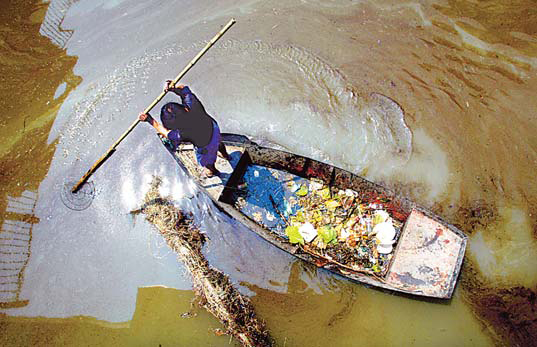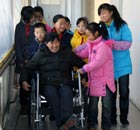Government and Policy
Water project alters flow of life along its route
By Qian Yanfeng (China Daily)
Updated: 2010-03-04 06:51
 |
Large Medium Small |
 |
Sun Jiang, an official for the environmental protection bureau of Yangzhou, is responsible for the design and implementation of ecological rehabilitation projects in the water conservation area between Yangzhou and Jiangdu. He said his work is vital to ensure the long-term improvement of the local environment and water quality.
"Environmental protection efforts along the eastern route have fallen short of public expectation because most of the funds have been used for water diversion projects instead of pollution control," he said.
Even government funding for activities like re-vegetating the conservation area, and controlling the use of fertilizers and pesticides by farmers, has been hard to come by, said Sun. By the end of 2007, the Yangzhou bureau had received just 20 percent of the 500 million yuan provincial authorities pledged to invest in anti-pollution projects. Since then, they have not received another penny, he said.
Tests show that the Jiangdu section of the 1,000-km Grand Canal has the best water quality. However, the rapid population growth and economic development of nearby townships and villages is bringing more pollution and producing greater environmental hazards, said Wang.
"Unlike urban industrial pollution that is easy to track and control, contamination in the rural areas is more difficult to prevent - and it is rising very quickly," he warned.
Teng agreed and said the population of his native Dinggou has risen at a startling rate, while the waste being produced has almost doubled in the last decade. One of the contributing factors, he said, is the success of the local middle school, which, thanks to its good reputation, has attracted large numbers of migrants looking for a better education for their children.
Factories, including high-polluting chemical plants, have also sprung up around the town as the authorities encouraged their development to generate more tax revenue, he said. One boss of one chemical company just 50 m away from his home is "so close" with the authorities that no one has been able to shut it down, he claimed.
"While it's easy to drive away factories in cities, it's hard to do that in rural areas. The environmental standards here are lax and more and more companies are moving in because of that," said Teng.
He Dejin, a researcher with the water resources protection bureau for the Huaihe River Basin, co-drafted a report on the environmental impact of the first-phase of the eastern route in 2002. He suggested authorities should update their plans for the SNWD project to better cope with China's problems.
"Environmental protection along the eastern route has been dissatisfactory largely because the SNWD plan was made about a decade ago. Now there are new pollution sources that are not being addressed," he said.
Industrial pollution and domestic sewage in townships have grown quickly in the last 10 years, matching the country's rapidly expanding economy. He said neither of these issues was adequately addressed in the pollution control plan drafted in 2001.
"Constructing wastewater treatment facilities in townships, for example, was not included in the budget. These have become critical to pollution control initiatives in relatively developed regions," said He.
"Local governments should realize it is not enough just to follow the plan. It's more scientific to implement SNWD-related activities in line with the local pollution control needs. Only in this way will the SNWD project really bring benefits to people along the eastern route.
"Constructing wastewater treatment facilities should be placed under local governments even without funding from higher authorities. There has been too much finger-pointing between different government levels."







